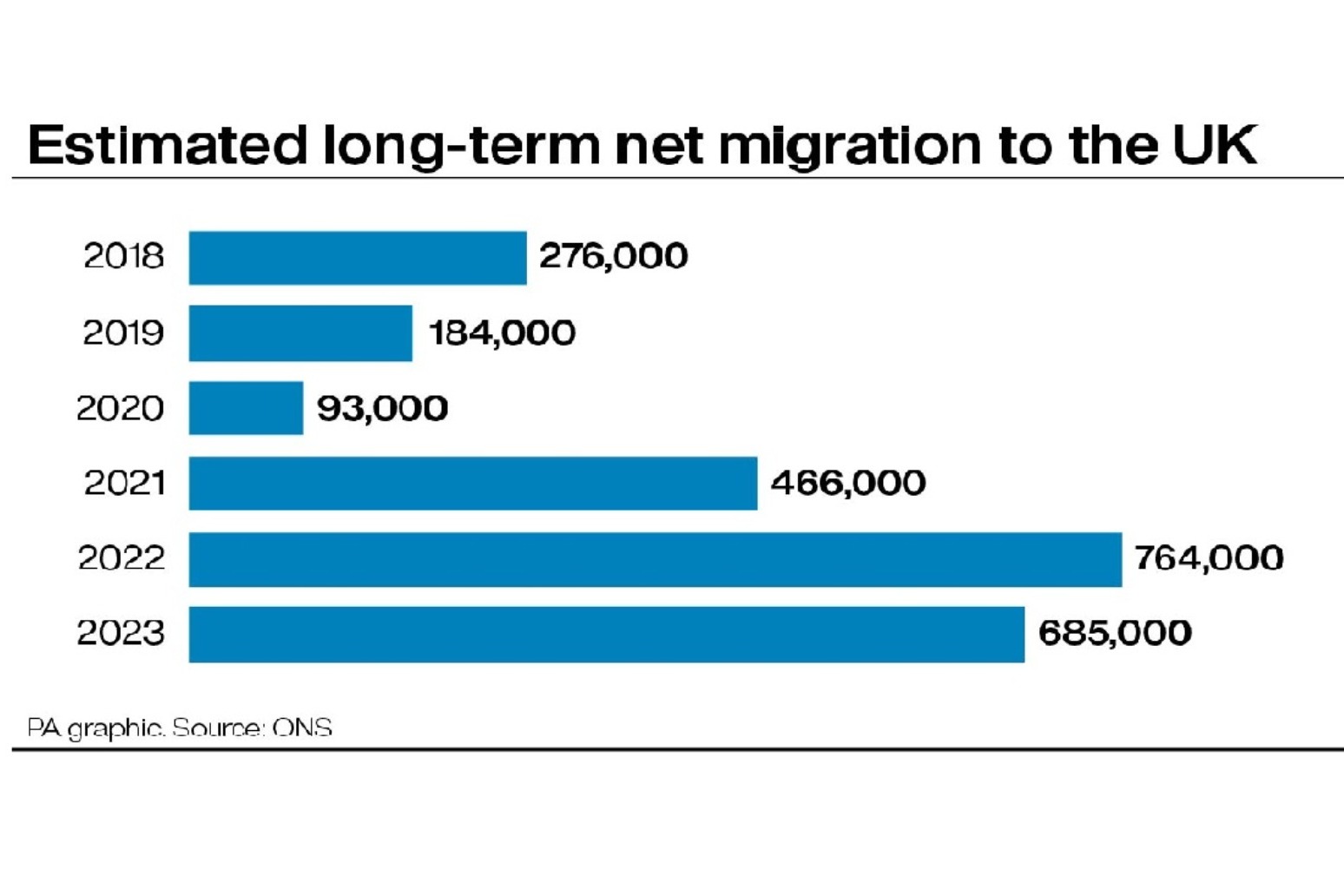-
 play_arrow
play_arrow
KL1 RADIO KL1 Radio Local Radio for West Norfolk
-
 play_arrow
play_arrow
KL DISCO KL Disco Playing Disco Music from the 70's onwards.24/7
-
 play_arrow
play_arrow
KL COUNTRY KL COUNTRY Playing New and Classic Country Music 24/7
-
 play_arrow
play_arrow
KL ROX KL ROX The best of New and Classic Rock.24/7
-
 play_arrow
play_arrow
KL SUMMER Summer Vibes 24/7 from KL1 Radio across West Norfolk
-
 play_arrow
play_arrow
KL CHILL Just Chill!
-
 play_arrow
play_arrow
KL POP The Best POP Hits all day Long!
-
 play_arrow
play_arrow
KL XTRA KL XTRA, The PopUp Station from KL1
music_note
Net migration to UK drops after hitting record levels, fuelling election debate


Revised official estimates show figures dropped by 10% last year
Net migration to the UK dropped by 10% last year after hitting a new record of 764,000 in 2022, revised official estimates show.
The latest figures, published a day after the General Election was called, are likely to feed the immigration debate – expected to be a key campaign battleground.
Revised estimates from the Office for National Statistics (ONS) put net migration to the UK in the year to December 2022 higher than previously thought. However, the figure for the year to December 2023 is estimated to be lower, at 685,000.
The ONS said it is too early to tell if this is the start of a new downward trend but that the most recent estimates indicate the number of people coming to the UK is slowing while those leaving is rising.
Work was the biggest driver of migration in 2023, overtaking study, and there was a substantial increase in the number of people arriving from outside the EU on work-related visas, the figures suggest.
The measure – which is the difference between the number of people arriving and leaving the country – has been revised upwards by 19,000 for 2022 from an earlier estimate of 745,000 now that more complete data for the year is available.
Some 1.22 million people are estimated to have arrived in the UK in 2023 (immigration), while 532,000 are likely to have left (emigration). This is compared with 1.26 million and 493,000 respectively in 2022.
The rise in the number of people emigrating from the UK long-term has been driven largely by increased emigration from non-EU nationals, particularly among those who initially arrived on a study visa, the ONS said.
The figures precede a raft of restrictions brought in by the Government since the start of 2024 amid pressure to cut the record number of people legally arriving in Britain.
The Home Office stressed the estimates “do not take into account the major package measures announced in December which have already started to have an effect”.
The estimates show that non-EU immigration for work-related reasons increased from 277,000 in the year to December 2022 to 423,000 in the year to December 2023, replacing study as the main reason for long-term migration.
More than four out of 10 people moving to the UK for work-related reasons last year came from India or Nigeria, most commonly in the health and social care sector.
The number of non-EU nationals arriving as dependants of those on long-term work visas was higher last year than the number of main applicants, at 219,000 and 204,000 respectively.
Levels of net migration to the UK have varied sharply in recent years.
The figure was on a downwards trend immediately before the Covid-19 pandemic, falling from an estimated 276,000 in 2018 to 184,000 in 2019.
It dropped to an estimated 93,000 in 2020, when restrictions introduced during the pandemic limited travel and movement.
The total then rose to 466,000 in 2021, before jumping further to a record 764,000 in 2022.
The most recent estimate of 685,000 for 2023, suggests levels are starting to fall once again, although “it is too early to say if this is the start of a new downward trend,” the ONS said.
Published: by Radio NewsHub

Similar posts
Upcoming shows

Weekend Back Trax
6:00 am - 8:00 am

Kelvin Scott – Weekend Breakfast
8:00 am - 11:00 am

Vicky Green – Classic Hit Lunchtime
11:00 am - 1:00 pm

Darren Furzey – Classic Hit Weekend
1:00 pm - 3:00 pm

Lee Vincent – Classic Hit Saturday
3:00 pm - 6:00 pm
-

Paris Olympics off to a sodden start with a rain-drenched opening ceremony

Three children who died in house fire are ‘missed beyond measure’, parents say

John Hunt says messages of support ‘like a hug’ following family crossbow deaths

Police officer under criminal investigation for assault after airport video

Hunstanton Fossil Hunting Trip – 18th August 2024
Message Us Now!
Copyright The Mediasite UK - 2023.



